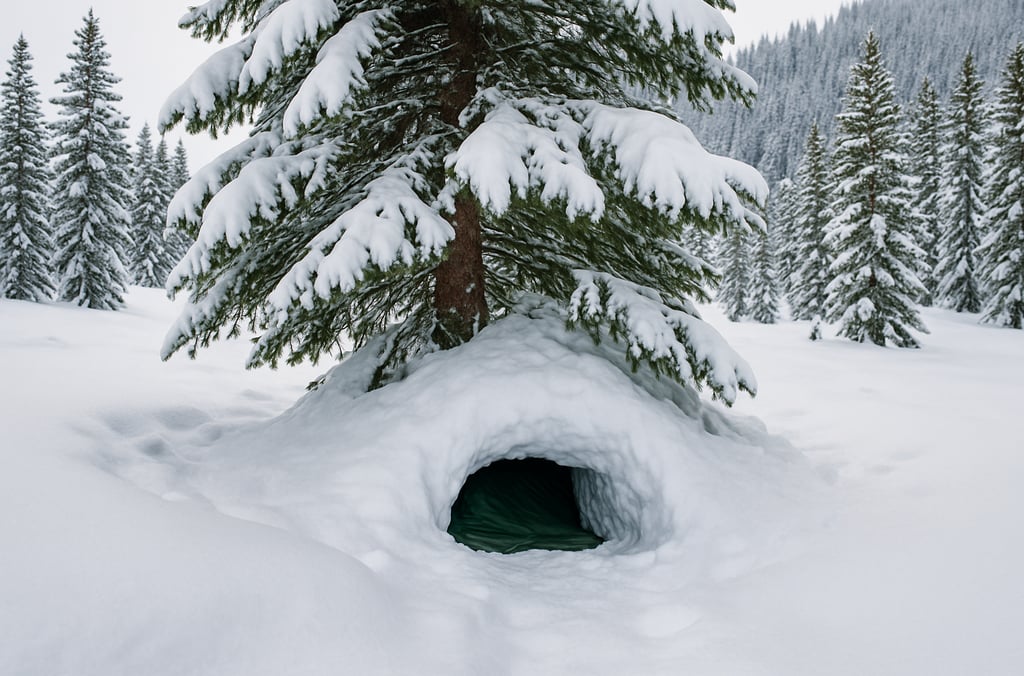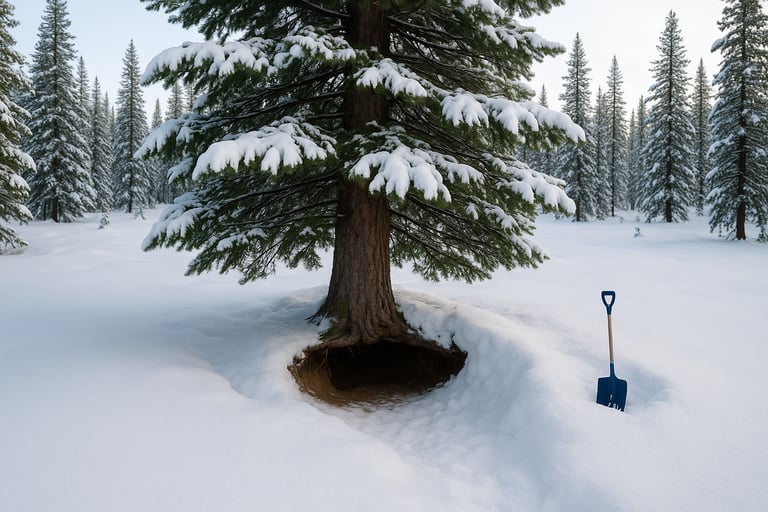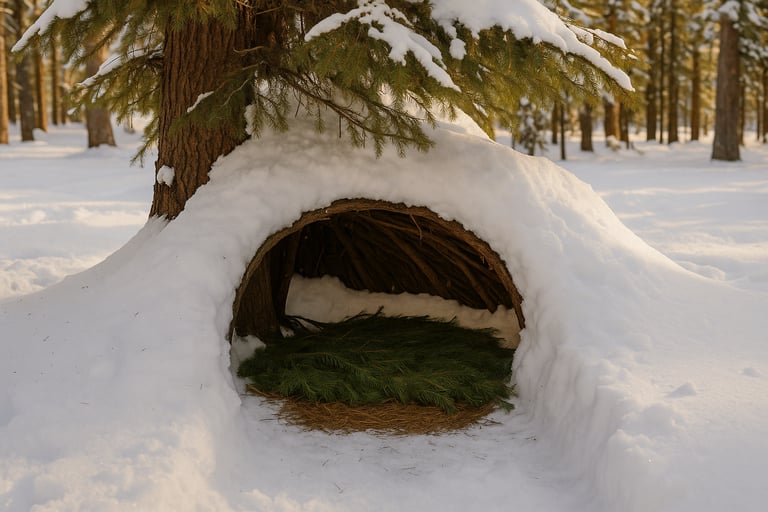How to Make a Tree Pit Shelter: A Lifesaving Winter Survival Technique
Learn how to build a tree pit shelter for survival in deep snow. This guide explains how to dig, insulate, and cover a winter shelter around a tree for warmth and protection in cold weather emergencies.


How to Make a Tree Pit Shelter: A Lifesaving Winter Survival Technique
If you ever find yourself stuck in the wilderness during a winter storm without a tent or built shelter, the snow itself might become your best ally. A tree pit shelter — sometimes called a tree well shelter — is a simple but highly effective survival technique that takes advantage of natural snowdrifts around evergreen trees.
This type of shelter can help trap body heat, block out wind, and provide life-saving protection against freezing temperatures when no other options are available. It’s especially useful in deep snow, alpine terrain, or during unexpected winter storms.
Let’s break down what a tree pit shelter is, how to safely build one, and how to make it as warm and livable as possible.
What Is a Tree Pit Shelter and When Should You Use One?
A tree pit shelter is built by digging into the snow around the base of a large evergreen tree. Because the tree’s branches catch falling snow, the area beneath often has less accumulation, which makes it easier to dig out a usable hollow. The tree’s dense limbs also act as a roof and help conceal the shelter from view.
Tree pit shelters are ideal in snowy, forested terrain where shelter options are limited. They’re especially useful if you’re stranded, lost, or waiting out bad weather. While not intended for long-term use, they can absolutely save your life in a cold emergency.
Choosing the Right Tree and Site
Look for a large evergreen like a pine, spruce, or fir with low-hanging branches that create a thick canopy. These trees naturally form snow wells, which are shallow pockets of lower snow depth near the trunk. Avoid trees with sparse branches or those located in avalanche-prone areas.
Make sure the snowpack is deep enough to dig into — at least three feet — and that the snow is not too loose or powdery. Firmer snow allows for better walls and a more stable roof.
Choose a spot that’s sheltered from wind and not too close to steep slopes, water, or falling branches.
How to Build the Tree Pit Shelter
Start by clearing out the snow beneath the tree branches. Use a shovel, stick, or even your hands if necessary. Dig down into the snow to create a pit about 3 to 4 feet deep and wide enough to lie down in comfortably. Make sure you keep the walls smooth and slightly curved inward to reduce the chance of collapse.
You’ll want to pack down the floor as much as possible to prevent body heat from melting the snow unevenly. Lay down insulation like pine boughs, dry grass, or a survival blanket if you have one to stay off the cold ground. You can also create a dedicated bough bed shelter for improved insulation and comfort inside your snow shelter.
Next, build up low snow walls around the opening and use tree branches or a tarp to create a roof. You can lean branches across the opening and pile snow on top for insulation. Be sure to leave a small ventilation hole if the shelter is fully enclosed, especially if you plan to stay overnight.
Make the entrance small and low to keep warm air in and cold wind out. If you have extra gear or snow blocks, use them to create a windbreak or wall just outside the entrance.
Staying Warm and Safe in a Snow Shelter
A tree pit shelter can be surprisingly warm when built correctly, but there are still important safety tips to follow. Never light a fire inside the shelter — the heat can cause the roof to collapse or dangerously reduce oxygen levels. Instead, use a candle lantern or warm clothing layers to stay warm.
Ventilation is essential. If your roof is made from branches and snow, always leave a gap or hole to allow fresh air to enter and moisture to escape. You don’t want to wake up in a humid, freezing cave with poor airflow.
If the temperature drops or wind picks up, reinforce your shelter with more snow and branches. The more insulated the roof and sides are, the better your chances of staying warm through the night.
When to Avoid a Tree Pit Shelter
Tree pit shelters are great for emergencies, but they’re not perfect for every situation. Avoid using one if the snow is very shallow, freshly fallen, or unstable. Also avoid areas at risk of avalanches, falling branches, or fast-changing weather conditions.
If you’re in a flatter area with deep snow but no trees, a snow cave or trench shelter may be a better option. And if temperatures are rapidly warming, melting snow can weaken the structure and make it collapse, so always assess the conditions first.
When used properly, though, a tree pit shelter can offer incredible protection, especially when time, gear, and energy are in short supply. If you’re traveling through snowy terrain, it’s also smart to know how to build a tarp shelter or poncho shelter as lightweight backup options for quick protection on the move.




© 2025. All rights reserved About | Privacy Policy | Terms and Conditions | Affiliate Disclosure | Disclaimer


